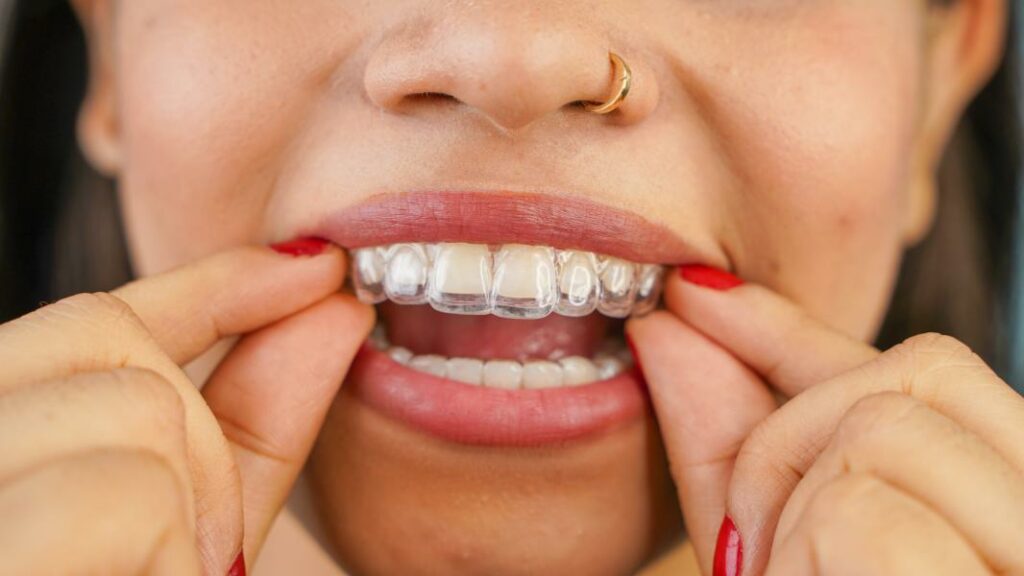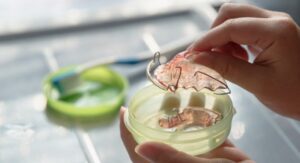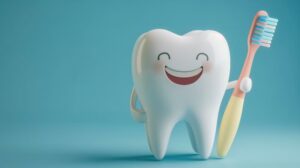Table of Contents
ToggleIf you’re considering Invisalign to perfect your smile, you might have heard about teeth shaving—also known as Interproximal Reduction (IPR). It may sound intimidating, but it’s actually a standard and minimally invasive procedure designed to help your teeth move more easily during your Invisalign treatment.
Let’s dive into what this process is, its benefits, how it works, and what you should keep in mind before deciding if it’s right for you.
What is Teeth Shaving?
In the world of orthodontics, teeth shaving refers to the removal of a small amount of enamel between the teeth, creating the necessary space for your teeth to shift into perfect alignment. Also known as Interproximal Reduction (IPR), this technique is commonly used to address overcrowding or help improve the fit of your Invisalign aligners.
By filing down the enamel slightly, your teeth have more room to move and adjust, which makes the Invisalign process more efficient. IPR is considered a safe, effective way to enhance orthodontic treatments, and it’s supported by studies. For example, a 2021 study in the Journal of Orthodontic Science highlighted how IPR can speed up treatment times and improve outcomes for Invisalign patients.
Why Shave Teeth for Invisalign?
Teeth shaving is primarily done to:
- Improve alignment: Especially in cases of mild to moderate crowding, removing tiny amounts of enamel helps teeth move more freely.
- Create space: When teeth are too close together, there’s little room for them to move into their correct positions without filing a bit of enamel away.
- Prevent extractions: In many cases, teeth shaving can reduce the need for extractions, offering a less invasive alternative to creating the necessary space for treatment.
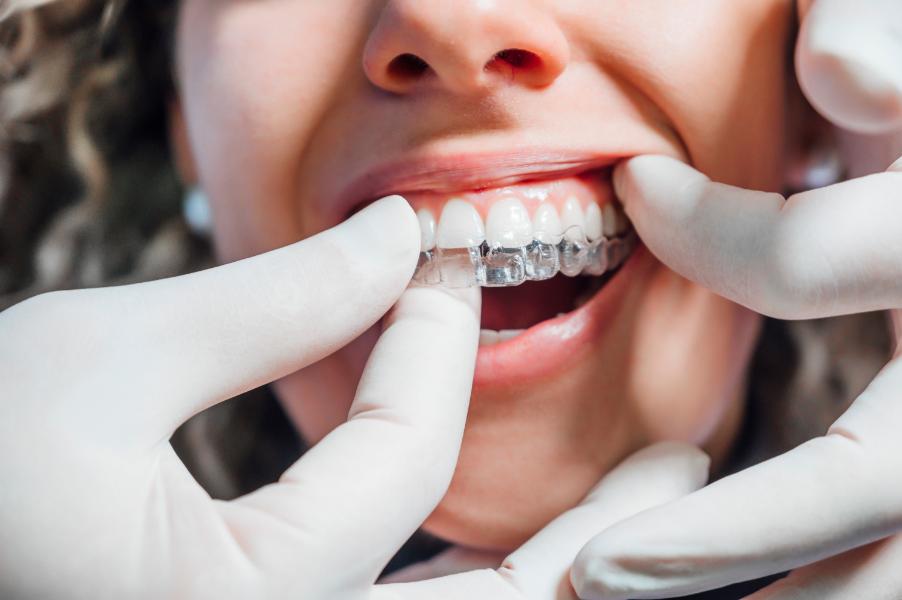
How Does Teeth Shaving for Invisalign Work?
Teeth shaving is a precise, quick process carried out by your orthodontist using special tools. Here’s a step-by-step breakdown of how it’s typically done:
- Instrument Selection: Depending on how much enamel needs to be removed, your orthodontist will choose either a diamond-coated strip for smaller amounts or a fine dental drill for larger reductions.
- Filing the Teeth: Using these tools, the orthodontist carefully files between your teeth to create tiny gaps. This is done slowly and methodically to ensure only a fraction of a millimeter is removed. You might feel a light vibration, but no pain.
- Gap Measurement: After filing, your orthodontist will measure the gap created to ensure it’s the correct width for your Invisalign aligners. They may insert a small gauge or dental probe to confirm this.
- Polishing and Smoothing: Once the filing is complete, the edges of your teeth are buffed and polished to smooth out any rough spots.
- Protecting the Enamel: To protect your newly shaved teeth, your orthodontist may apply fluoride or another protective solution to promote remineralization and strengthen the enamel.
The process typically takes only a few minutes per tooth, and you can go back to your normal activities right after the procedure.
Does Teeth Shaving Hurt?
The good news is, teeth shaving for Invisalign is generally painless. Since only a thin layer of enamel is removed and the procedure doesn’t go near the tooth’s nerves, discomfort is minimal. Most patients describe it as a slight pressure or vibration rather than actual pain. In rare cases, if you’re particularly sensitive, your orthodontist may apply a numbing gel to ensure maximum comfort.
Benefits of Teeth Shaving for Invisalign
There are several benefits to teeth shaving during Invisalign treatment:
- Better Tooth Movement: By creating space, your aligners can fit better and work more effectively, moving your teeth into position with less resistance.
- Fewer Extractions: Teeth shaving offers an alternative to pulling teeth, especially when space is the only issue.
- Faster Treatment Time: Studies show that patients undergoing IPR often complete their Invisalign treatment quicker than those who don’t need it.
- Improved Smile Aesthetics: Once your teeth are properly aligned, they fit together more naturally, resulting in a balanced and visually appealing smile.
Are There Risks Involved?
While teeth shaving for Invisalign is a common and safe procedure, it’s not entirely without risks. However, these are typically minor and easily manageable:
- Temporary Sensitivity: Some patients experience mild sensitivity to hot or cold foods after the procedure. This is temporary and can be managed by using a toothpaste designed for sensitive teeth.
- Risk of Uneven Wear: If not done correctly, teeth shaving could cause uneven wear. However, when performed by an experienced orthodontist, this risk is extremely low.
- Enamel Loss: While enamel does not grow back, the amount removed is so small (a fraction of a millimeter) that it doesn’t compromise the long-term strength of your teeth.
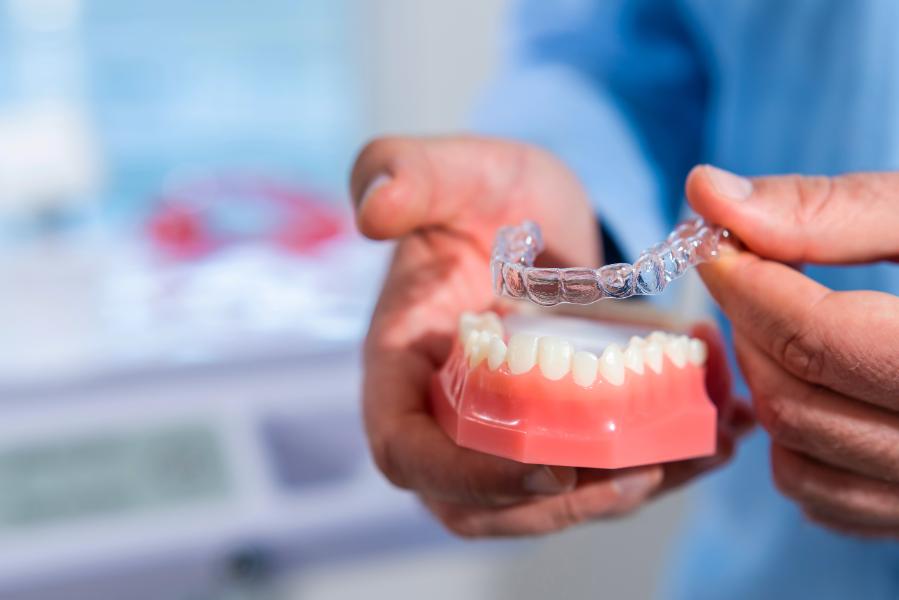
How to Care for Shaved Teeth During Invisalign Treatment
Proper aftercare is crucial to maintain the health of your shaved teeth and ensure the best results from your Invisalign treatment. Here are some tips:
- Brush Gently: Use a soft-bristled toothbrush and non-abrasive fluoride toothpaste (like Sensodyne) to avoid irritation.
- Floss Regularly: Keep the spaces between your teeth clean with gentle flossing, especially after meals.
- Avoid Hard Foods: To prevent damage to your teeth and aligners, avoid hard, sticky, and sugary foods that could cause complications.
- Regular Check-Ups: Schedule follow-up visits with your orthodontist to monitor your progress and ensure everything is going as planned.
What to Consider Before Opting for Teeth Shaving
Before deciding on teeth shaving for Invisalign, it’s essential to consult with your orthodontist. They will assess your dental health, alignment, and specific treatment goals to determine if IPR is necessary. Here are a few factors to consider:
- Orthodontist’s Experience: Make sure your orthodontist is experienced in performing IPR and has handled similar cases successfully.
- Treatment Goals: Understand how teeth shaving will help achieve your desired results, and ask your orthodontist to explain how it fits into your overall treatment plan.
- Risks vs. Benefits: Weigh the minimal risks of IPR against the significant benefits it can offer, including faster treatment times and fewer extractions.
Whether you’re curious about teeth shaving for Invisalign or simply need a consultation to understand your treatment options, Zaytoun Orthodontics is here for you. Don’t wait to take the next step towards a straighter, healthier smile. Schedule your appointment today and let their skilled professionals create a custom treatment plan just for you!
Get started on your journey to a beautiful smile now by visiting the Zaytoun Orthodontics contact page or call us directly. Your perfect smile is just one appointment away!
Sources
https://pmc.ncbi.nlm.nih.gov/articles/PMC11032144/
https://www.sciencedirect.com/science/article/pii/S1013905223002110
The information provided in this blog is for educational and informational purposes only. It is not intended as a substitute for professional medical, dental, or healthcare advice. Always consult with a qualified healthcare provider for diagnosis, treatment, and answers to specific medical questions.

I’ve been around orthodontics for as long as I can remember with my father opening Zaytoun Orthodontics in 1959. That upbringing of being around my father and watching him change lives through perfecting smiles helped guide me in figuring out what I wanted to do when I grew up, which was to be in the healthcare field. Orthodontics for over 30 years. Joining my father and sister was a thrill for me and something that sets us apart from other orthodontists.


